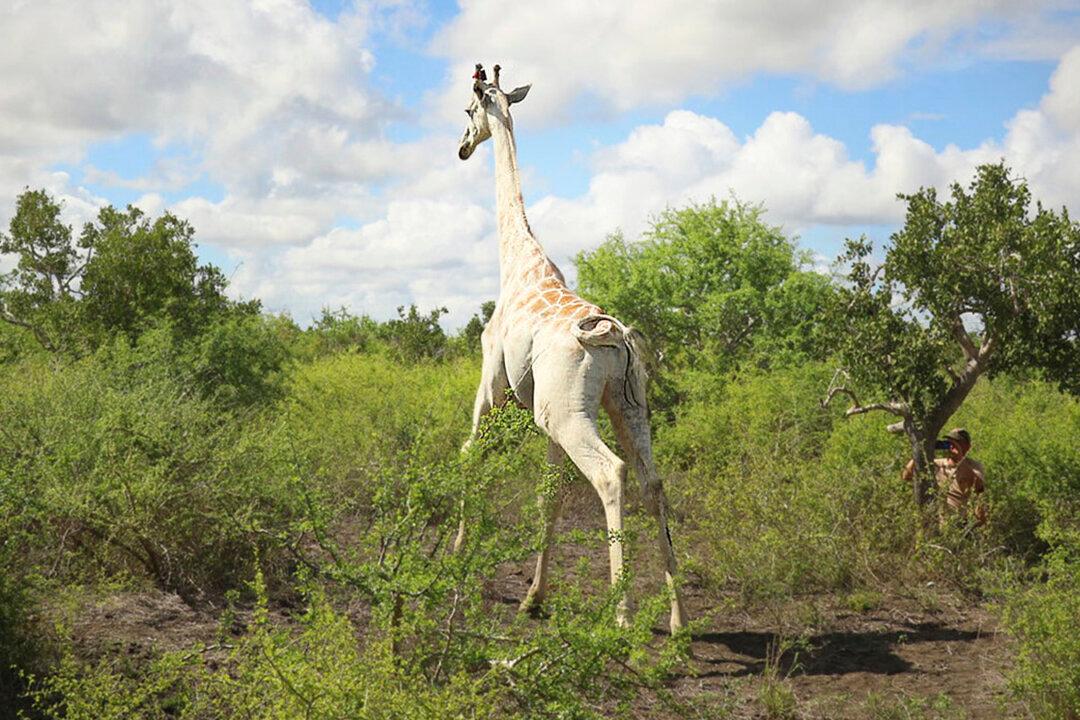In northeast Kenya, the world’s last known surviving white giraffe has been fitted with a GPS tracking device in an attempt to keep it safe from poachers, conservationists announced last week.
At the start of the year, two other white giraffes, a female and her 7-month-old calf, were killed by poachers. Their carcasses were discovered in March, in a conservation area in Kenya’s northeastern Garissa County.






